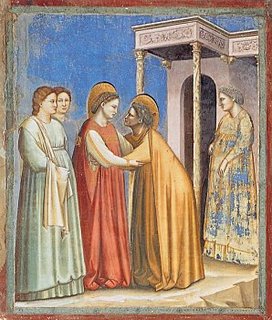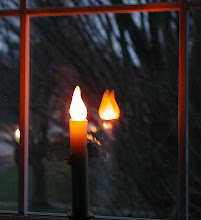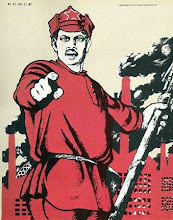This is made up from 3 posts. They deal with Mary, the mother of Jesus, Susan of the revolution, and the last brings in Elizi Dantor, a Lwa of Vodou.
It has become apparent they all deal with the same thing.
**********
 Kick-Ass Mary
Kick-Ass Mary
How great the pain that pierced your heart,
Mother, when they raised Him on the cross;
ceaseless furrows of your tears record the
tsunami of your loss!
Hammer and spear, thorns and scourge,
all life from your soul did purge?
"My pain blinded everything else, I could not stand;
I admit that in my pain I cried a few
tears and screamed in my deep despair... softened
by the mound of stones I threw!
from Roman heads came blood, their cries attest:
'Get that Jew bitch! That Jewish terrorist!' "

notes:
the Virgin Mary is usually depicted as silently suffering during the passion of Jesus. However, she fought for her kids like a soldier, and drew the blood of killers. She still fights for us.
(as I explain in a comment, I tired of Mary being portrayed as Our Lady of Perpetual Victimization.)
**********
Susan welcomes Revolution
in the month of Nisan:
she smokes without matches,
she drinks without wineskins;
when she cries,
she is not dieing...
as are we...
but she is creating the rivers of Eden!
Susan is a Visionary
in the Spring of the year:
not drinking from poisoned wells,
not eating of forbidden foods;
when she sleeps
she does not slumber,
as do we,
but remains vigilant for her tribe until dawn!
Susan is an desert shaman
in the April of time:
the scorpion of heart's desire
makes her strip off all her clothing;
when she loves,
she is not at peace,
as are we;
nightly hunts she leads with the campfire's greyhound smoke.
Susan welcomes revolution;
in month of Tammuz:
reflections in eternity,
encased in Persian mastic
as an ant
encased in amber:
but not we
who east of Paradise must live until all men be free!
**********
 MyStudios.com
The face of the Virgin
MyStudios.com
The face of the Virgin is that of a young girl, or a young woman. Rarely is she portrayed as a middle-aged woman or an older woman. So do I think of her. I use the grammar of Images and link common images in prayer.
However, when Mary visits her cousin, she sings the Magnificat, wherein we hear: "He casts the mighty from their thrones, and raises the lowly."
From this we get a glimpse of ancient Jewish thought in the society and in the individual, for Mary exclaims that God has turned the social order upside down and chosen Her, not a rich woman, not a trust child, not a queen; just Her.
So, is Mary always demure and a follower? Or may she also be a radical, a leader?
What we think of Mary is solely within this world and our consciousness. The Holy is not constrained by our thinking nor our imaging. The Holy is undefined to our minds, for to be otherwise would to be limited.
The Holy is a mystery which we attempt to understand with language and imaging and emotions - and ritualized behavior - and magical thinking - and the list goes on. However, the Holy is not what any one of these may show, for these activities come from our past, our personal histories. We have learned how to speak and picture God and Mary and Jesus. We learned this in the past. The Holy is the Future. It is where we are going.
The Holy cannot be held within our imaginings. It is the future and what Religion is actually all about. The fact that evil men infest religion makes human religion no different from human politics, or human business. What does differentiate Religion from all other human activities is the fact that Religion has the
potential to exceed all that separates humans from each other and join them in a supra-national, supra-parochial group of communality.
And just as this conception probably strikes you as bizarre and outlandish, so also must any experience of the Holy knock you off your high horse, as it did Paul on the road to his fate.
Life has infinite detail; it is demure and it is brash. All Life is tending to the Holy, regardless whether it be demure or brash. God saved us because he loved us. Period. Not because we thought of the Holy in a certain way and not because we acted out a given role. The Love came because God willed it. Nothing more, nothing less.
Jesus said that those who have not seen and yet believe are blessed. Blessed are they who have not seen, that have not imagined, that have not created an image in their minds of things remembered, that have not a taste of emotion from beholding Jesus. They are more blessed that have not seen and now do not see, for Jesus has left the Earth.
Now we have Faith without having seen, without miracles and signs. What, indeed, is an image or a sign if not something that can be pondered over, talked about, remembered, imagined, possibly even measured and subjected to science?
We could take a scientific poll of those who witnessed the Virgin at Fatima and put Religion on a proper scientific footing! And about time, too. Jesus said blessed are those who have not seen, for their Faith leads them. So if you are Faithful, you will not require images; you will not need to see... a sign, a holy person, a miracle. Our Faith frees us from all material needs eventually.
Now, having said this, when I pray, the Holy is not imaged. When I turn to certain aspects of the Holy, such as the Virgin, I pray to the Virgin, my Mother. She is demure and she is radical in her defense of her children. Until one month ago, my image of the Virgin was that of a meek and demure young woman with possibly a dash of wailing mother thrown in - the result of so many Lenten Fridays and singing the
Stabat Mater Gloriosa. I had begun to study Haitian Vodou ( or Voodoo as we foppishly call it ), and I learned that even Mary may fight for her children.
My understanding of Haitian religion was nil, consisting of little knowledge of Toussaint L'Ouverture, readings of scary slave ship rebellions, insurrections, tales of Zombies popularized by white men in the early 20th century, Bela Lugosi in
White Zombie, and a general disdain and feeling of racial superiority (I have just described the USA's relationship with Haiti.).
I was looking at religious art of Haiti. This art often is a concentration of objects and a mixture of media. A religious statue can be composed of a bewildering array of found objects, rum bottles, old statue, aged holy cards, beads, sequins, candles, applique... there is no limit. While looking at one, I suddenly became aware that this art differed in no way from the religious art of any other country.
Moreover, the history of Vodou differed in no essential way from the history of any other religion. Whereas the Haitian artist creates an infinity of detail in his art, the European heritage of art has a preference to be rational - having just enough detail to "get it". Certainly not so much detail as too enable the viewer to become lost in a revery.
Art containing the range of detail shown in Haitian art is considered "cranky" or marginal by Western society; like "
The Fairy Feller's Masterstroke " versus Mondrian.
The viewing of the Virgin as demure, as in much of Christian tradition; or the viewing of the Virgin Mother as a vigorous proponent of her children, much like the
Ezili Dantor of Haiti who is another image of the Virgin
[ or, of Mary, for Elizi Dantor is more like a complement to virginity - 2014] - neither view exhausts the infinity of the Holy which we think of as the Virgin Mary.
Now, most people want something definite at a point like this. This is where one is supposed to say: "When you speak about God, you are actually talking about yourself." I do not believe that. It is a trivialization of religious life.
When I speak about anything in the same way that I speak about religion, I'm always speaking about my hopes and fears, my likes and dislikes - my whole history. When we talk about the Holy, we are talking about the past, present , and the future. When we talk about the Holy, we are talking about God, the Virgin, the Saints, the Angels, the Prophets, ourselves, our friends, our enemies, the whole of human history...
There is NO simple conclusion that sums it all up in one small sentence that you feel comfortable wrapping your arms around. It is an infinity wrapped in angelic arms with no end.
When I see Mary, I see forever.
--

































